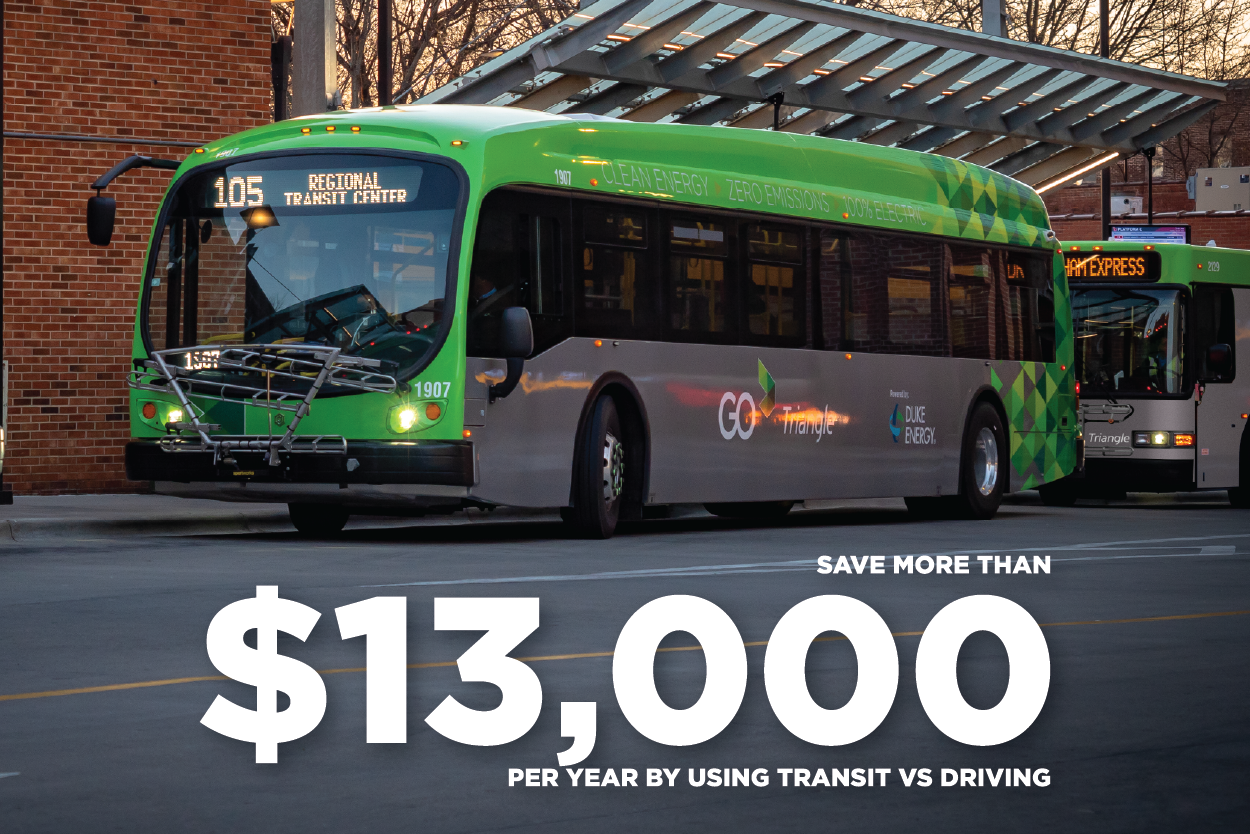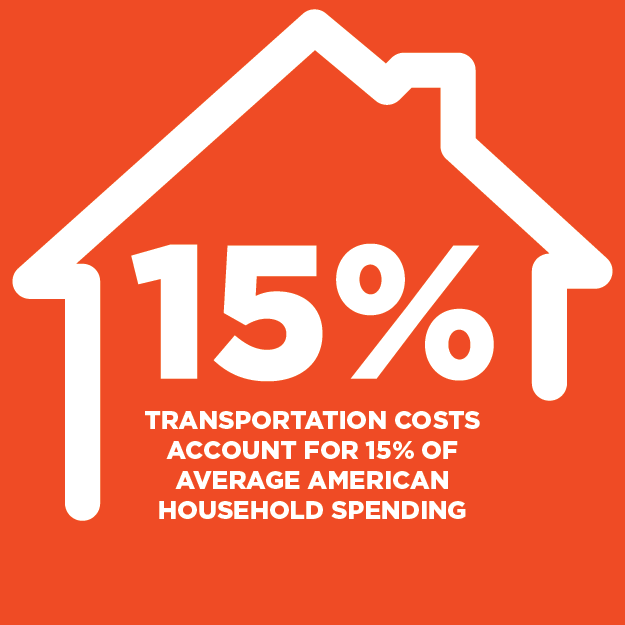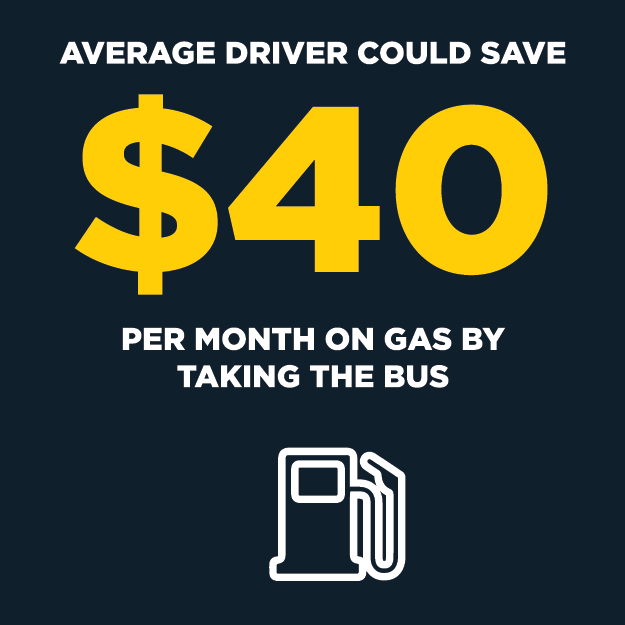
In times of uncertainty, one thing is certain: Public transportation can save you money
Potential global economic pressures may have many wondering about the looming impact on their day-to-day living expenses. However, one area in which people can reliably save money is transportation.

North Carolinians could save more than $13,000 a year by using public transit services, such as those provided by GoTriangle and its partners, instead of driving. That number, calculated by the American Public Transportation Association, an association that represents the public transportation industry, is based on commuters and travelers using public transit instead of driving due to significant increases in auto costs and gasoline prices.
In 2022, the most recent year of Bureau of Transportation Statistics data, transportation was the second largest household expenditure behind housing, accounting for 15 percent of average household spending. For lower-income families, roughly 30 percent of their income goes toward transportation. And with the specter of rising automobile and fuel costs, safe and reliable public transportation options are more vital than ever before.
The real cost savings of transit
Taking public transit can be a gamechanger in households, the difference between having extra cash for a cup of coffee each day – or perhaps even a carton of eggs each week, according to Matthew Palm, Assistant Professor of City and Regional Planning at UNC Chapel Hill.
Palm noted that the average commute length in the Triangle is 10 miles one way, or 20 miles a day. The average car gets 26 miles per gallon of fuel; with gasoline costing roughly $3.00 per gallon, the average driver could save $40 a month or roughly $480 a year on just taking the bus alone – and that doesn’t consider other factors like car maintenance or parking costs.
“Not having to spend money on parking is a huge savings for those of us who ride the bus,” said Palm.
The Central Pines Regional Council’s 2023/2024 Commuter Survey revealed that 44 percent of weekly bus commuters said saving money or reducing travel costs influenced their commute choice while 28 percent of respondents who drove alone to work at least once a week said they spent too much money getting to work for more than half of their trips, compared to just 13 percent of bus riders. Central Pines assists local governments in the Triangle region with technical expertise and regional planning, including transportation.
“We have seen with our own folks that the ability to take a bus to and from where they work is a plus,” said Shuchi Gupta, Principal Planner with Central Pines. “We see a lot of value in supporting staff and encouraging them to use transit.”
Making public transit easier
Riding the bus may not be as difficult or inconvenient as many people think.
“We strongly encourage people to try taking the bus a couple of times to get used to the route,” said Kim Johnson, Sustainable Travel Services Manager at GoTriangle. “When you get into the habit of riding a particular route, you will notice others that have the same habits, and you really get to know people. You can really build community.”
GoTriangle is constantly reviewing ways to make transportation as effective as possible:
- Facilities and improvements – This summer, the GoTriangle Raleigh Union Bus Station – commonly referred to as RUS Bus – will open in Downtown Raleigh. This facility will support increased transit service downtown and allow convenient access to Raleigh Union Station rail service.
- Service changes – The agency routinely reviews its service route offerings and adjusts for time and efficiency. For instance, with the opening of RUS Bus this summer, several routes will be adjusted to accommodate not only for the new station, but also for increased efficiencies for travelers. Two routes in Durham and Chapel Hill – Routes 400 and 405 – will also be adjusted to decrease travel time.
- 15-minute service – As part of the service change process, GoTriangle will soon offer its first ever 15-minute service along the 400 Route between Chapel Hill and Durham. This route will run every 15 minutes from Downtown Chapel Hill and Downtown Durham on weekdays until 7 p.m., every 30 minutes on weekdays until 9 p.m., and on weekends until 7 p.m. (and every 60 minutes at other times).
- Free fare options – Several demographics qualify for free fare on GoTriangle buses: Children under 12 (with an adult), Youth (age 13-18), Seniors over 65, and Transit Assistance Pass riders age 19-64 who qualify for Medicaid or SNAP/EBT benefits or have a household income below $35,000 annually. In addition, GoTriangle offers a half-off pass for riders who qualify for a disabled pass.
All these enhancements are just some of the ways that GoTriangle seeks to make public transit not only more appealing, but more accessible.
“We have found that if people live more than a quarter mile from a bus stop, they are less likely to walk to the stop,” said Johnson. “But there is also the option of biking to a bus stop – and this is a good time of year to try that out.”
Many already appreciate the positives
While the idea of saving money by taking the bus (or carpool, vanpool or bike) may be new to many, there are many people who have long enjoyed the benefits of public transportation. In fact, many companies in the region subsidize public transportation for their employees.
“It is definitely a huge cost savings for me, especially with how long my commute is,” said Heather Thompson, who works at UNC-Chapel Hill and has been taking public transit for almost a decade thanks to Park and Ride options. “The amount of gas I don’t have to spend on that is great, and also just wear and tear on my car.”
For others, the cost benefits are just one part of the public transportation formula.
“I spend my time on the bus thinking about what’s coming up during my workday,” said Allie Poffinberger, “so it’s a kind of transitional space for me.”
Poffinberger, a self-proclaimed “no car person” who works as a library specialist at Duke University, has been taking the bus since 2009 and uses the Share the Ride NC app to track her commuter journey.
“Anywhere I need to go, I try to find a bus that gets me there first.”
And, finally, statistics also show that taking the bus is safer than driving. According to data from the National Safety Council, the rate of car deaths per 100 million passenger miles in recent years was more than 50 times that of buses. So, while you can save money by taking the bus, you can also reduce a lot of stress.
“The stress reduction you get from not having to drive is immeasurable,” said Johnson.
Added Palm: “Just enjoy the ride.”